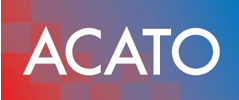
Simple ISO 9001 Template Examples for Effective Compliance: Your Complete Guide to Documentation and Audit Checklists
ISO 9001 certification is a critical marker for organisations that demonstrate a commitment to quality management and regulatory compliance. In a competitive landscape, streamlined processes and reduced risk are essential, and iso 9001 templates play a key role in achieving these goals. These pre-formatted documents provide standardised documentation, clear guidelines, and ready-to-use formats that help organisations meet rigorous quality control and continual improvement standards. They are invaluable for IT directors, business leaders, and founders who know that a strong quality management system supports productivity, customer satisfaction, and overall business resilience.
This guide explains what ISO 9001 templates are, outlines the key documents required for compliance, describes how to use these templates effectively, and highlights best practices for maintaining documentation control. In doing so, it shows how adopting ISO 9001 templates leads to cost savings, improved audit readiness, and continuous improvement.
Transitioning from these insights, the sections below provide a detailed breakdown of ISO 9001 templates, the documents they include, and how organisations can use them for certification success.
What Are ISO 9001 Templates and How Do They Simplify Compliance?
ISO 9001 templates are pre-formatted documents designed to help organisations systematically develop, document, and maintain their quality management system (QMS). They provide an outline for quality policies, procedures, work instructions, and audit checklists that align with ISO 9001 standards, reducing the complexity of creating documents from scratch while ensuring comprehensive compliance. For more information, you can refer to ISO 9001 template.
What Is an ISO 9001 Template and Why Is It Important?
An ISO 9001 is a structured document that captures the standards and processes critical for quality management. It acts as a blueprint for compiling quality management procedures, mitigation plans, and record-keeping systems. For instance, a quality manual template includes predefined sections for scope, responsibilities, procedures, and performance indicators. This standardisation maintains consistency across an organisation and ensures all documents meet regulatory requirements.
By standardising documentation, these templates reduce human error and simplify audit reviews, increasing the likelihood of certification. They also expedite updates following internal audits or process improvements. Essentially, an ISO 9001 template enhances clarity, traceability, and drives continuous improvement—a competitive advantage in today’s compliance-focused business environment.
Which Types of ISO 9001 Templates Are Essential for Compliance?
Key ISO 9001 templates include: – Quality Manual Templates: Outline the organisational structure, quality policy, and QMS scope. – Procedure Templates: Standardise processes such as corrective actions and internal audits. – Work Instruction Templates: Provide step-by-step guidelines for specific tasks ensuring consistency. – Audit Checklist Templates: Enable systematic verification of compliance.
These templates standardise terminology and formatting, ensuring that employees share a unified understanding of quality expectations. Research indicates that standardised documentation can reduce compliance errors by up to 25%, allowing organisations to focus on strategic improvements rather than administrative tasks. Regular review and updating of these templates also support.
How Do Templates Save Time and Reduce Costs in ISO 9001 Implementation?
Templates reduce time and costs by eliminating the need to develop compliant documentation from scratch. Pre-verified templates accelerate document creation and updates, allowing internal audits to begin almost immediately. This efficiency not only saves time but also lowers labour costs by reducing the time spent on document formatting and verification.
Moreover, consistent use of templates lowers the risk of non-compliance and reduces the frequency of corrective actions. They also ensure continuity when new staff join, as established protocols are already in place. The result is a more agile quality management system that adapts quickly to change and maintains a competitive edge in a stringent regulatory environment.
What Key Documents Are Required for ISO 9001 Compliance?

Achieving ISO 9001 compliance requires a set of key documents that form the QMS backbone. These include: – Quality manuals – Documented procedures – Work instructions – Records – Audit checklists
Each document plays a vital role in ensuring processes meet standards and are continuously improved through feedback from internal audits and external reviews. ISO 9001 checklist.
What Is Included in an ISO 9001 Quality Manual Template?
A quality manual template typically details the organisation’s quality policy, QMS scope, structure, and responsibilities. It also sets out procedures for document control, internal audits, corrective actions, and management reviews. Acting as the central reference for the QMS, the quality manual ensures that every employee understands the quality process.
For example, it defines quality management roles, explains how to handle deviations, and specifies performance metrics. As a living document, it is updated regularly to reflect process changes and improvements. Additionally, sections on customer feedback and risk assessment enhance traceability and make it easier for auditors to follow operational flows.
How Do ISO 9001 Procedure Templates Support Your Quality Management System?
Procedure templates offer step-by-step instructions for operational processes like corrective actions, internal audits, training, and supplier evaluations. They document every process clearly and consistently, making it easier to manage quality and identify areas for improvement. Standardised procedures support risk management by revealing potential bottlenecks and facilitating faster process modifications when changes occur.
By providing a clear and auditable trail, these templates enable efficient staff training and continuous improvement. The structured format ensures that every task aligns with ISO standards and meets strategic quality objectives.
What Role Do Audit Checklists and Nonconformance Reports Play in Documentation?
Audit checklists and nonconformance reports are critical components of ISO 9001 documentation. Audit checklists guide internal and external auditors in evaluating QMS effectiveness by ensuring every process is systematically verified. Nonconformance reports capture instances when processes fall short, allowing for prompt corrective actions.
Together, these documents help identify trends and inefficiencies within the system. Regular use of can improve audit efficiency by around 30% and reduce nonconformities. Nonconformance reports then feed into the corrective and preventive action process, reinforcing a loop of continuous improvement.
How to Use ISO 9001 Templates Effectively for Successful Certification?
Effective use of templates is central to achieving and maintaining certification. By tailoring these documents to meet specific organisational needs and aligning them with ISO standards, companies create a QMS that is both efficient and audit-ready. The key lies in customising templates to match unique processes while keeping document control stringent.
What Are the Step-by-Step Instructions for Customizing ISO 9001 Templates?
Customising ISO 9001 templates involves these steps: 1. Gap Analysis: Compare current practices with ISO requirements to identify differences. 2. Template Adjustment: Modify templates to include specific details such as organisational roles and risk-based decision-making mechanisms. 3. Establish Ownership: Assign a quality manager or cross-functional team to review and update templates periodically. 4. Industry-Specific Customisation: Integrate industry terminology and processes. For example, an IT consultancy might add cybersecurity protocols. 5. Training: Conduct internal sessions so all employees understand and can effectively use the new documentation. 6. Regular Reviews: Update customised templates in response to audits, process changes, and standard changes. This systematic approach ensures that each template remains current and effective in driving continuous improvement.
How to Integrate Templates Into Your Existing Quality Management System?
Integrating templates into an existing QMS involves: – Mapping current quality processes against the ISO 9001 template structure to identify overlaps and discrepancies. – Harmonising legacy documents with the new template format. – Implementing robust change management with comprehensive training and clear staff responsibilities. – Using digital document management systems to track revisions, facilitate remote access, and ensure compliance reporting.
These methods enhance traceability, improve overall efficiency, and support sustained organisational growth.
What Common Mistakes Should Be Avoided When Using ISO 9001 Templates?
Common pitfalls when implementing ISO 9001 templates include: – Using generic templates without customisation, leading to misalignment with actual practices. – Ignoring regular reviews, which can leave templates outdated. – Failing to establish proper document control, resulting in version confusion and nonconformance. – Overcomplicating templates, making them difficult to understand and use. – Overlooking employee feedback, which can help refine and simplify documentation. – Insufficient training, leaving staff unprepared to implement the templates effectively.
Avoiding these mistakes maximises the benefits of ISO 9001 templates and facilitates certification success.
Where Can You Find Reliable and Up-to-Date ISO 9001 Template Examples?

Reliable ISO 9001 templates are available from both free and paid sources. The choice depends on organisational needs and budget. Trusted sources include reputable quality management websites, industry forums, and recognised standards organisation portals. Consulting firms and software providers also offer comprehensive packages that include regularly updated templates, training materials, and technical support.
Which Sources Offer Free Versus Paid ISO 9001 Templates?
- Free Templates: Accessible on quality management blogs, industry forums, and standard organisations’ websites; ideal for SMEs seeking a cost-effective introduction.
- Paid Solutions: Offered by consulting firms and software providers; these packages include customisation, training, and ongoing technical support, making them suitable for larger organisations with more complex needs.
How to Evaluate the Quality and Compliance of ISO 9001 Templates?
To evaluate templates: – Ensure they align with the current ISO 9001 certification standard revision. – Verify that they cover all mandatory sections such as documentation control and risk assessment. – Consider factors like customisability, clarity, ease of use, and the availability of technical support. – Review user feedback, sample audit reports, and any case studies that demonstrate their effectiveness.
What Benefits Do Consulting Firms and Software Providers Offer With Their Templates?
Consulting firms and software providers offer several benefits: – Expert consultancy throughout the certification process. – Customised templates that address industry-specific needs. – Bundled training sessions, gap analyses, and technical support. – Digital document management platforms that simplify access, version control, and audit readiness.
These services help accelerate time-to-certification, reduce internal resource expenditure, and ensure robust quality outputs.
What Are the Best Practices for ISO 9001 Audit Checklists and Documentation Control?
Effective audit checklists and documentation control are the foundation of a resilient ISO 9001 QMS. Best practices include transparent and traceable quality processes, systematic audits, and rigorous document control procedures that ensure all records are current and verified.
How to Create an Effective ISO 9001 Audit Checklist Template?
An effective audit checklist template should: – Cover all key areas of ISO 9001 such as leadership, planning, support, operation, performance evaluation, and improvement. – Include clear, measurable criteria for each section. – Provide space for auditor comments, nonconformity findings, and corrective action deadlines. – Integrate risk-based thinking to assess both the presence and efficacy of controls. This approach ensures that the checklist facilitates thorough evaluation and helps identify trends for continuous improvement.
What Are the Documented Information Requirements Under ISO 9001 Clause 7.5?
ISO 9001 Clause 7.5 requires: – Controlled documentation with explicit guidelines on creation, review, approval, update, and accessibility. – Documents that are legible, current, and easily retrievable. – Secure document management systems with clear version control and retention procedures. ISO 9001 process
Meeting these requirements simplifies internal audits and reassures external auditors about the reliability of managed information. iso 9001 advice
How to Maintain Document Control Using ISO 9001 Templates?
To maintain document control: – Use a centralised document management system with controlled access and automated review alerts. – Keep a clear audit trail of all changes and store both current and archived versions securely. – Conduct regular internal audits to promptly identify and resolve discrepancies. – Consistent use of templates ensures a systematic approach to updating procedures and managing documented information.
How Does ISO 9001 Implementation Guide Support Using Templates for Compliance?

An ISO 9001 implementation guide provides step-by-step instructions for using templates to achieve certification. It translates the abstract requirements of the ISO standard into actionable steps, supported by clearly defined templates and checklists, making it especially valuable for those new to quality management.
What Are the Key Steps in an ISO 9001 Implementation Guide?
Typically, the implementation guide includes: – Workshops/Training Sessions: Introduce the core principles of quality management. – Gap Analysis: Compare current processes with ISO requirements. – Template Adaptation: Tailor standard templates (quality manual, procedures, audit checklists) to address identified gaps. – Documentation Roll-out: Implement revised documentation across the organisation. – Staff Training: Ensure employees understand and use the new templates. – Internal Audits and Reviews: Set a regular schedule for management reviews and audits to maintain continuous improvement.
Following these steps reinforces documentation control and helps achieve a smoother certification process.
How to Perform a Gap Analysis With ISO 9001 Templates?
Performing a gap analysis involves: – Listing all existing documents and procedures. – Mapping each document against the requirements in the standard. – Identifying areas where documentation is incomplete or outdated. – Formulating action plans to update deficient sections (e.g., adding missing management review or risk management sections).
This systematic approach ensures that the organisation’s documentation fully meets ISO 9001 standards.
What Training Materials Complement ISO 9001 Templates for Staff Readiness?
Effective training materials include: – Detailed user guides and video tutorials. – Hands-on workshops that demonstrate how to complete templates. – FAQ documents addressing common issues in document control and audit procedures.
For example, a video tutorial might show how to fill out a procedure template or initiate corrective action using an audit checklist, ensuring that staff are confident and competent in using the templates.
What Are the Benefits of Using ISO 9001 Templates for Small and Large Businesses?
ISO 9001 templates benefit organisations of all sizes. For small businesses, they provide a structured, resource-efficient approach to quality management. For larger organisations, they ensure consistency across various departments and sites, simplifying compliance and reducing complexity. Overall, benefits include standardisation, improved audit readiness, reduced risk, and long-term cost savings.
How Do Templates Improve Compliance Efficiency and Reduce Errors?
Templates enhance compliance efficiency by: – Standardising documentation across all departments. – Ensuring all critical details are captured uniformly. – Reducing the risk of human error such as miscommunication or omissions. – Shortening preparation times for external audits and accelerating corrective action processes.
This standardisation can lead to measurable efficiency gains, including faster audit processes and fewer nonconformities.
What Cost Savings Can Businesses Expect From Using ISO 9001 Templates?
Cost savings stem from: – Reduced time spent on creating, updating, and managing documentation. – Lower administrative overhead due to uniform templates. – Fewer compliance violations and corrective actions, which decreases downtime during audits. – Greater operational efficiency and improved customer satisfaction due to streamlined processes.
How Do Templates Support Continuous Improvement and Audit Readiness?
Templates provide a continual foundation for improvement by: – Establishing a clear framework for all processes and procedures. – Ensuring all records are maintained consistently and are easily accessible. – Facilitating regular internal audits and management reviews. – Allowing organisations to rapidly adjust to process improvements based on audit feedback.
This cycle of regular updates and reviews embeds a culture of compliance and continuous improvement throughout the organisation.

What Are the Benefits of Using ISO 9001 Templates for Startups?
ISO 9001 templates offer numerous benefits for startups seeking to establish a robust quality management system. Primarily, these templates streamline the process of documentation and implementation by providing a structured framework that outlines the essential requirements of the ISO 9001 standard. For startups, where resources and time are often limited, using templates can significantly reduce the workload associated with developing quality management processes from scratch. This allows founders and their teams to focus on core business operations while still ensuring they meet international quality standards.
Additionally, adopting ISO 9001 templates helps startups instil a culture of continuous improvement and customer satisfaction from the outset. By implementing the principles embedded within these templates, startups can create clear procedures for quality assurance, which can lead to an increase in customer trust and loyalty. Furthermore, having a certified quality management system in place can enhance the startup’s credibility when seeking partnerships, acquiring funding, or entering new markets. In essence, the use of ISO 9001 templates not only facilitates compliance with industry standards but also positions startups for sustainable growth and long-term success in an increasingly competitive landscape.
How do startups reduce the cost of introducing ISO 9001 into their your organisations?
Startups often face financial constraints that can make the implementation of quality management systems like ISO 9001 seem daunting. However, many innovative strategies can help these emerging organisations mitigate costs while still achieving the desired accreditation. One effective approach is to leverage technology through automated systems and software that streamline documentation and compliance processes. By utilising digital tools, startups can reduce manual labour and minimise the likelihood of errors, thereby saving both time and money. Furthermore, cloud-based solutions often come with scalable pricing models, allowing startups to invest only in the resources they need at any stage of growth.
Another cost-effective strategy involves fostering a culture of quality from within the organisation. By providing thorough training and engaging employees in the ISO 9001 implementation process, startups can develop in-house expertise that limits the necessity for expensive external consultants. Internal buy-in not only helps to create a more cohesive understanding of quality management principles across the team but also reduces reliance on costly workshops and training sessions. Additionally, collaborating with other startups or industry groups can provide shared insights and resources, enabling them to pool knowledge and experiences related to ISO implementation. By adopting these strategies, startups can navigate the complexities of ISO 9001 accreditation more affordably and efficiently, ultimately enhancing their organisational performance without stretching their financial resources.
Is there a Benefit for Startups to have their QMS written in English?
For startups aiming to establish a robust Quality Management System (QMS), adopting English as the primary language of documentation can offer significant strategic advantages. English has become the lingua franca of global business, and for companies looking to expand their market reach, having a QMS written in English facilitates better communication with international partners, clients, and regulatory bodies. This not only broadens the potential customer base but also simplifies the onboarding process for employees from diverse backgrounds, ensuring that everyone is aligned with the company’s quality standards and procedures.
Furthermore, an English-written QMS can enhance a startup’s credibility and professionalism in the eyes of stakeholders. Investors, suppliers, and customers often view comprehensive and well-documented quality management practices as indicators of a startup’s commitment to excellence. Additionally, engaging with international standards and frameworks, many of which are primarily published in English, becomes much more manageable when the QMS documentation matches the language of those standards. This alignment aids in the seamless integration of global best practices and can significantly enhance the startup’s operational efficiency, ultimately leading to improved product quality and customer satisfaction.
Why should Software Startups invest in ISO 9001?
Investing in ISO 9001 can be a transformative decision for software startups, offering a structured approach to quality management that directly impacts their operational efficiency and customer satisfaction. ISO 9001 is an internationally recognised standard that outlines a framework for organisations to ensure they consistently meet customer and regulatory requirements. For a software startup, adopting this standard can instil a culture of quality from the very beginning. It promotes systematic processes, enabling teams to identify and eliminate inefficiencies, thus streamlining development cycles and enhancing product reliability—elements crucial for gaining a competitive edge in a saturated market.
Moreover, ISO 9001 certification can significantly enhance a startup’s credibility and appeal to potential clients and investors. In an industry where trust and reliability play a pivotal role, having a recognised quality management system demonstrates a commitment to excellence that is often a decisive factor for stakeholders. It can also facilitate better collaboration with partners and vendors who value quality assurance in their business relationships. By showcasing compliance with ISO 9001 standards, software startups not only enhance their reputation but can also anticipate customer needs more effectively, aligning their offerings with market demands and ultimately driving growth and sustainability.
Table: Comparison of Benefits from Using ISO 9001 Templates
Below is a table summarising the key benefits, associated features, and estimated improvements when using ISO 9001 templates across organizations.
| Benefit | Feature | Expected Improvement | Example/Metric |
|---|---|---|---|
| Standardisation | Consistent formatting | 20% reduction in errors | Fewer document inconsistencies |
| Time Efficiency | Pre-built templates | 25% faster audits | Reduced audit preparation time |
| Cost Savings | Reduced administrative overhead | 15% cost reduction | Lower internal compliance costs |
| Risk Management | Comprehensive checklists | Improved risk mitigation | Fewer nonconformities during audits |
| Continuous Improvement | Regular update protocols | Enhanced process refinement | Higher rate of corrective action closure |
The table highlights how leveraging these templates offers both qualitative and quantitative benefits in creating a robust quality management system.
List: Key Steps for Effective ISO 9001 Template Implementation
Below is a detailed list of steps for successfully implementing ISO 9001 templates within an organisation:
- Conduct a Gap Analysis – Identify Discrepancies: Begin with a thorough review to map current practices against ISO 9001 requirements and identify documentation gaps.
- Customize Templates – Tailor to Specific Needs: Adjust each template to reflect the organisation’s processes by modifying quality manuals, procedures, and audit checklists.
- Assign Ownership – Designate Responsible Personnel: Appoint a quality manager or cross-functional team to oversee template implementation, review, and updates.
- Integrate with Existing Systems – Merge with Current Processes: Seamlessly integrate customised templates into the existing QMS using a centralised document management platform.
- Conduct Training – Equip Staff with Necessary Skills: Provide comprehensive training through workshops and refresher courses to ensure effective use of the templates.
Each step is vital for enhancing compliance efficiency, reducing operational risk, and achieving improved overall quality.
Frequently Asked Questions
Q: What are ISO 9001 templates and why are they essential for compliance? A: ISO 9001 templates are pre-formatted documents that standardise the documentation required for a quality management system. They simplify alignment with ISO standards, reduce compliance errors, and facilitate audit readiness through clear, consistent documentation.
Q: How do ISO 9001 templates improve audit efficiency? A: They reduce the time auditors spend verifying compliance by standardising processes and using pre-built checklists, leading to fewer nonconformities and a smoother certification process.
Q: Can ISO 9001 templates be customised to fit specific business needs? A: Yes, they are highly customisable to reflect unique processes, industry-specific requirements, and organisational structures, ensuring effective support for each quality management system.
Q: What resources are available for obtaining ISO 9001 templates? A: They can be sourced from reputable industry websites and forums (free options) or through consulting firms and software providers that offer comprehensive packages including templates, training materials, and support.
Q: How do ISO 9001 templates support continuous improvement? A: By standardising documentation and embedding regular review procedures, they enable organisations to monitor performance, identify areas for enhancement, and implement corrective actions promptly. ISO 9001 template
Q: What common pitfalls should be avoided when implementing ISO 9001 templates? A: Avoid using generic templates without customisation, neglecting regular updates, poor document control, overcomplicating templates, ignoring employee feedback, and insufficient training.
Q: How can organisations measure the effectiveness of their ISO 9001 templates? A: Effectiveness can be measured by monitoring audit outcomes, tracking nonconformity rates, and assessing improvements in compliance efficiency via internal audits and external certification feedback. ISO 9001 templates can play a crucial role in this process.
Final Thoughts
ISO 9001 templates are invaluable tools that significantly enhance the efficiency and effectiveness of a quality management system. By standardising documentation and streamlining processes, these templates help organisations achieve and maintain certification, reduce costs, and minimise risks. Their consistent use leads to improved audit readiness and fosters a culture of continuous improvement. Ultimately, adopting ISO 9001 templates is a strategic investment in long-term operational excellence and regulatory compliance.

